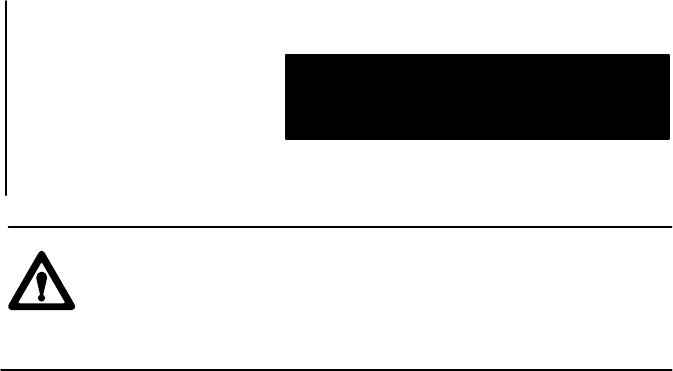User Manual Owner's manual
Table Of Contents
- 1772-6.5.8, Mini-PLC-2/02, -2/16, -2/17 Processor, User Manual
- Important User Information
- Summary of Changes
- Table of Contents
- 1 - Using This Manual
- 2 - Fundamentals of a Programmable Controller
- 3 - Hardware Features
- 4 - Installing Your Programmable Controller
- 5 - Starting Your Processor
- 6 - Maintaining and Troubleshooting Your Processor
- 7 - Memory Organization
- 8 - Scan Theory
- 9 - Relay-Like Instructions
- 10 - Program Control Instructions
- 11 - Timers and Counters
- 12 - Data Manipulation and Compare Instructions
- 13 - Three-Digit Math Instructions
- 14 - EAF Math Instructions
- 15 - EAF Log, Trig, and FIFO Instructions
- 16 - EAF Process Control Instructions
- 17 - Jump Instructions and Subroutines
- 18 - Block Transfer
- 19 - Data Transfer Instructions
- 20 - Bit Shift Registers
- 21 - Sequencers
- 22 - Selectable Timer Interrupts
- 23 - Report Generation
- 24 - Program Editing
- 25 - Programming Techniques
- 26 - Program Troubleshooting
- A - Specifications
- B - Processor Comparison Chart
- C - Number Systems
- D - Glossary
- E - Quick Reference
- Index
- Back Cover

Program Troubleshooting
Chapter 26
26-7
ATTENTION: When an energized output is being forced off,
keep personnel away from the machine area. Accidental
removal of force functions instantly energizes the output device.
Injury to personnel near the machine could result.
Forced
Address Display
The industrial terminal displays a complete lists of bit addresses that are
forced on or off by pressing:
[Search][Force On]
[Search][Force Off]
If all bits forced on or off cannot be displayed at one time, use the
[Shift][←] and [Shift][→] keys to display additional forced bits.
Press [Cancel Command] to terminate this display.
You can use the Temporary End instruction to test or debug a program up
to the point where it is inserted. The Temporary End instruction acts as a
program boundary because instructions below it in user program are not
scanned or operated upon. Instead, the processor immediately scans the
I/O image table, then scans the user program from the first instruction to
the Temporary End instruction.
When you insert the Temporary End instruction, the rungs below it,
although visible and accessible, are not scanned. You can edit their
content, if desired. The displayed section of user program made inactive
by the Temporary End instruction contains the message INACTIVE AREA
in the lower right-hand corner on the Industrial Terminal screen.
Inserting
a T
emporary End Instruction
Insert a Temporary End instruction in either of two ways:
First Method (Entering from the Remote Program or Program mode)
1. Cursor to the last rung of the main program to be kept active.
2. Position the cursor on the output instruction.
3. Press [Insert] [T. End].
Temporary End Instruction










